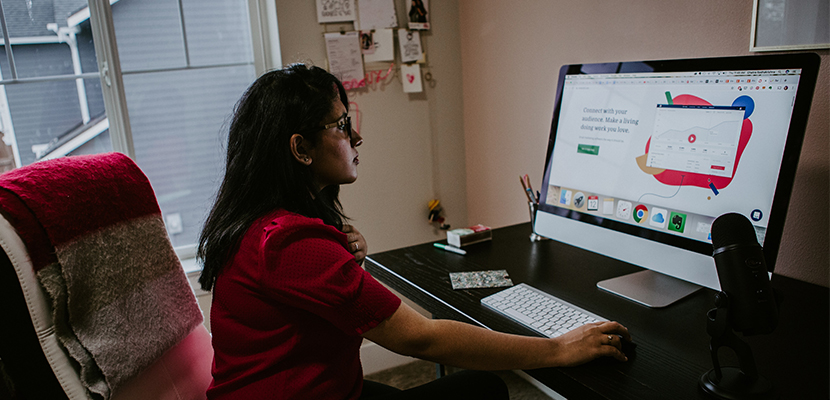5 Ways to Overcome the Challenges of Virtual Live Classrooms
5 Ways to Overcome the Challenges of Virtual Live Classrooms

As we navigate the new reality with restrictions on in-person training and face to face interactions, digital is no longer a concept in the future – it’s changing the fabric of our society, underpinning the way we live and learn today.
Training workers and saving jobs amid the COVID-19 outbreak top the agenda of both individuals and employers, as evidenced in the increase in course enrolments from January to March 2020 at NTUC LearningHub (NTUC LHUB). Remember lessons in traditional classrooms with a teacher and a whiteboard? For learners today, learning spaces like traditional classrooms have transcended to Virtual Live Classrooms (VLCs). These VLCs expand beyond four walls of a traditional classroom, allowing for collaboration among digitally connected learners, and access to knowledge across the globe.
However, the implementation of VLC also comes with its set of challenges. How can we overcome these obstacles to emerge stronger? Here are five tips for adult learners to transition to VLCs!
1. Consider profiles and needs
Designing an effective online pedagogy to train workers of varying profiles requires empathy as much as it involves science! From diverse backgrounds to differences in digital awareness for online learning, it is crucial for the curriculum design teams and trainers to be particularly conscious in planning training methods and anticipating challenges to ensure all learners can learn productively and comfortably. Technical support should also be strengthened to efficiently troubleshoot potential problems for both trainers and trainees, to minimise disruptions to the learning process.
For trainees, what is the first step you should take? Lesson preparation! Simple yet essential tasks such as ensuring you have the right equipment, computer programmes, and set-up for the course requirements can help you make a seamless transition from tradition classrooms to VLCs.
2. Adapt lesson formats for remote engagement
All learners have had one of those days – succumbing to distractions and disengaging in classes. To capture attention spans, trainers can adjust lesson duration and include more interactive elements such as gamified quizzes, virtual break-out rooms, and short polls to stimulate trainees and encourage active learning! Trainees, time to maximise productivity in the comfort of your own homes through a more interactive lesson plan! No more long lectures for you to doze off to.
3. Be mindful of remote environment and overall experience
The learning experience for trainees become invariably different as we move from a physical classroom to trainees’ homes with a digital screen. Trainers need to be mindful of the shift and encourage learners to relax their eyes and stretch their bodies to re-energise and re-focus. On the other hand, trainees can create a dedicated space for learning – a digital device to attend VLC, headset to listen attentively, clean desk for better concentration, and a cup of water to hydrate yourself, should do the trick in creating an optimal VLC environment!
4. Explore the new learning platform and virtual classroom dynamics
Moving from a traditional classroom with pen and paper to VLC can be an intimidating process. Trainers can help trainees familiarise with the new virtual learning environment by providing a comprehensive introduction to the VLC platform and explain guidelines and ground rules that enable successful interactions. Trainers can also ensure that their web-camera is positioned with the light source to enhance visibility and wear a headset to block off ambient noises when teaching. Trainees – have some fun exploring the ‘raise hands’ function, or use ‘class chatrooms’ to input questions for trainers to answer at the end of each section!
5. Fully equip trainers to carry out effective and engaging virtual lessons
A trainers’ ability to navigate the dynamics of virtual interactions may make or break the entire VLC learning experience. In a virtual environment where trainers are restricted to a digital montage of trainees’ faces in varying quality, angles and window sizes, trainers need to develop a new sensory and scanning pattern so that they can get back the gut feeling in their interactions with trainees usually present in traditional classrooms.
Through our training sessions for our trainers before the transition to VLCs, we were able to guide them in making a pivotal paradigm shift, prepare them for potential challenges in a VLC setting, and provide them with the right resources to ensure a smooth training session.
Are you ready to overcome the learning obstacles? Join us in a Virtual Live Class today!



.jpg/35c2504b-c682-453c-a957-5f41aa260654/)

.png/38086120-168a-c6f2-2006-9d35bdd5a289/)